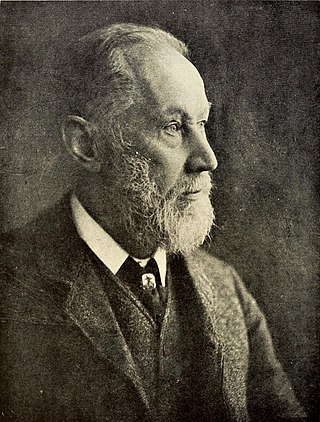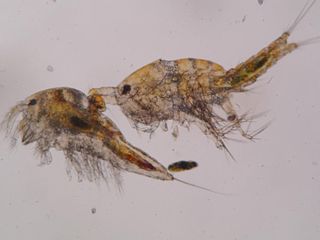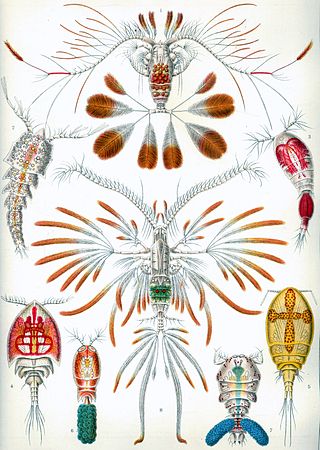
The Cyclopoida are an order of small crustaceans from the subclass Copepoda. Like many other copepods, members of Cyclopoida are small, planktonic animals living both in the sea and in freshwater habitats. They are capable of rapid movement. Their larval development is metamorphic, and the embryos are carried in paired or single sacs attached to first abdominal somite.
Boeckella is a genus of copepods in the family Centropagidae.
Calamoecia is a genus of copepods in the family Centropagidae confined to Australasia. It is thought to have evolved since the separation of the Australian continent from Antarctica. Three of the Australian endemic species are listed as vulnerable species on the IUCN Red List. The genus contains the following species:
Leptocaris is a genus of copepods in the family Darcythompsoniidae. One species, the Mexican endemic L. stromatolicolus, is included on the IUCN Red List as a vulnerable species. The genus contains the following species:
Tropocyclops is a genus of copepod crustaceans in the family Cyclopidae. It contains the following species:

Canthocamptidae is a family of copepods. Most of the 700 species are confined to fresh water, although there are also marine species. It contains the following genera:

George Stewardson Brady was a professor of natural history at the Hancock Museum in Newcastle-upon-Tyne who did important volumes on Copepoda and Ostracoda, including those from the Challenger expedition.
Centropagidae is a family of copepods in the order Calanoida. Its members are particularly known as plankton in coastal waters and in fresh water in Australia and southern South America. They are also found on subantarctic islands and in lakes in Antarctica.
Karllangia is a genus of marine copepods. Its name commemorates the Swedish carcinologist Karl Georg Herman Lang. The genus contains five species:

Gelyella is a genus of freshwater copepods which are "surrounded by mystery". They live in groundwater in karstic areas of southern France and western Switzerland. The two species are the only members of the family Gelyellidae and, although previously placed in the order Harpacticoida, a new order, Gelyelloida, was erected for this family alone.
Robertgurneya is a genus of copepods, containing the following species:

Tegastidae is a family of copepods, which are characterised by having laterally compressed bodies, a claw-like mandible in the nauplius stage, and by a modified male genital complex. 85 species have been described in 6 genera. Two species of Smacigastes are found at hydrothermal vents, while the remaining species are found in shallow water, associated with algae, bryozoans and cnidarians, such as corals.
Gladioferens is a genus of copepods in the family Centropagidae, found in coastal marine and lagoon habitats in the Southern hemisphere. It contains the following species:
Darcythompsoniidae is a family of copepods, containing four genera. Members of the family have a very wide distribution throughout the tropics, where they live in rotting mangrove leaves. They lack egg sacs and are thought to lay their eggs directly into the leaf litter.
Parastenocarididae is a family of copepods in the order Harpacticoida adapted to life in groundwater. It contains the following genera:

Harpacticidae is a family of copepods, containing the following genera:

Artotrogidae is a family of copepods in the order Siphonostomatoida.

The clade Multicrustacea constitutes the largest superclass of crustaceans, containing approximately four-fifths of all described crustacean species, including crabs, lobsters, crayfish, shrimp, krill, prawns, woodlice, barnacles, copepods, amphipods, mantis shrimp and others. The largest branch of multicrustacea is the class Malacostraca.
Laophontidae is a family of copepods belonging to the order Harpacticoida.
Cylindropsyllidae is a family of copepods belonging to the order Harpacticoida. It was first described by Sars in 1909








